Authored by David Stockman via InternationalMan.com,
The true scandal of current American fiscal governance needs be commented on. Or, better still, hammered upon good and hard.

To wit, the American electorate apparently doesn’t give a shit about runaway government spending because as a practical matter the overwhelming share of voters don’t pay the taxes to fund it. Aside from social insurance taxes, which most payroll taxpayers still believe to be a premium for a government-sponsored retirement annuity, the bottom 90% of households fund only a tiny fraction of Federal spending.
That’s right. The bottom 145 million US income tax filers (out of 161 million total filers) currently pay just $500 billion in Federal income taxes. That’s barely $3,500 per return and even then approximately 50 million of these returns owe zero taxes or actually get tax credit refunds for taxes they haven’t paid!
In the grand scheme of things, therefore, direct tax payments by the bottom 90% of income tax filers amounted to only 12% of Federal spending in FY 2024 outside of social insurance trust funds. To wit, Federal spending ex-social insurance was $4.82 trillion in FY 2024 and upwards of $4.3 trillion of this was paid for by the top 10% of income tax payers, corporations, minor excise and import duty payers and borrowing—of which there was $1.8 trillion of the latter in FY 2024.
Needless to say, the top 10% got soaked good and hard, paying $1.538 trillion of Federal income taxes and as a practical matter nearly the entirety of the $530 billion corporate income tax, which in today’s globally competitive world gets mainly pushed back to shareholders. In effect, $2.1 trillion or 43% of Federal spending outside of social insurance is paid for by the top 10%.
Needless to say, that’s just plain unfair and economically counter-productive, too. The current marginal rate for top bracket taxpayers is 40.8% when you include the Medicare surcharge and the so-called NIIT (net investment income tax). That’s already extortionate because in a free society there is no way that the government should grab 40% of anyone’s income—especially since that’s only the Federal take, which can easily grow to 50% after state and local income and property taxes.
Moreover, when the TCJA act of 2017 expires at year-end 2025, the top marginal rate will jump to truly confiscatory rate of 43.4%, and well beyond 50% in most states after state and local levies are layered on.
In short, America desperately needs to raise more revenues to fund even a downsized government after the DOGE treatment. But the income tax is more than tapped out, and 90% of the public is getting a hall pass on the latter.
Accordingly, what needs to happen is a sweeping reform, which would shift the Federal revenue base overwhelmingly to consumption and sales tax levies. That would ensure that the economic damage is limited and that 100% of the voting public would have skin in the game and feel the pain of spending via commensurate tax extractions. Then they might well demand fiscal sanity from their elected representatives in a manner that rarely occurs under the current defective fiscal regime.
We will elaborate more on the needed sweeping tax base reform in Part 2, but suffice it here to say that not only is the current Federal income tax grossly unfair to the productive classes and tapped out as a practical matter of revenue generation, but it is also unadministratable. Accordingly, more than half of the massive 100,000 man IRS bureaucracy could be eliminated even without a sales/consumption tax replacement, while upwards of 90% could be eliminated if the income tax were mainly substituted by a sales tax.
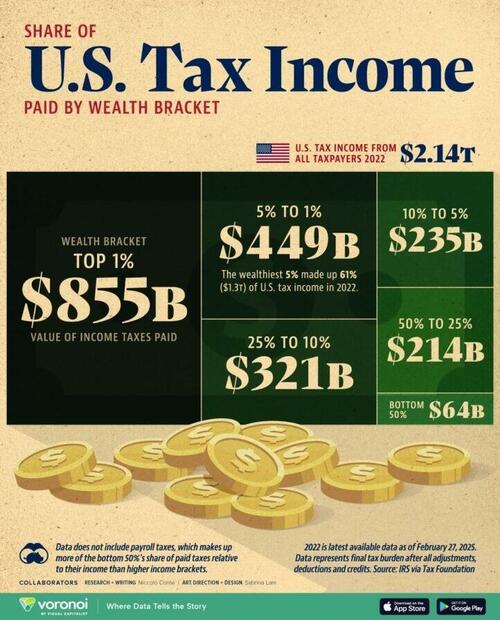

Needless to say, we are not talking about just bureaucratic nannies and meddlers in the case of the current 83,000 IRS employees—-a figure which is heading for 102,000 by the end of the decade under the still unrepealed Biden revenue grab. In the ranks of what amounts to a small city’s worth of Federal bureaucrats are also a goodly phalanx of tax cops, gumshoes, enforcement lawyers and tax filing proctologists.
So the question recurs: What has generated this massive bureaucracy in the first place, and what fundamental policy shifts are needed to cut the IRS headcount by 50% (42,00 jobs) and upwards of $5 billion of compensation and other operating costs?
The answer starts with calling the IRS’ bluff. When you look at the actual tax filing data it is damn evident that the Deep State bureaucrats are faking mightily when it comes to their massive staffing demands. We discovered the scam way back in our OMB days while jousting with the Treasury Department over the sacred cows in its budget. But nothing is different 40-years later—so here’s the smoking gun that points the way.
In the most recent complete tax-year (2022) there were 161.336 million individual income tax returns filed, which reported $14.83 trillion of Adjusted Gross Income (AGI). But fully 146.045 million of those filings, which reported $10.025 trillion in AGI, did not claim any itemized deductions.
Moreover, among these non-itemizers about 97 million owed taxes and used the standard deduction to calculate taxable income and the amount owed before tax credits. And another 49 million standard deduction users owed no Federal income taxes at all due to low taxable income or child and other tax credits.
In short, you absolutely do not need a giant IRS bureaucracy—and, indeed, hardly any labor-intensive operation at all—to administer the IRS code in the case of 92% of annual tax filings and the overwhelming share of US income taxpayers. That’s because virtually all the relevant data for completion of these non-itemized filings is machine readable and available on other IRS reporting systems, as shown below.
For want of doubt, here is the entirety of the tax computation for a couple earning wages at the US median income of $80,000, using the $13,850 standard deduction for a joint return and claiming two $2,000 child tax credits. The fact is, with today’s technology 99.999% of the work of processing, examining and adjusting (if necessary) non-itemized tax returns of this type should be accomplishable by IRS computers, with nary a bureaucrat’s finger-prints evident in the whole shebang.
That’s especially the case because the overwhelming share of the $10 trillion of AGI among non-itemizers is for wages and salaries reported to the IRS on W-2s; and, also, for interest, dividends, rents, royalties, independent contractor earnings, stock sales, pensions, annuities, IRAs and taxable Social Security earnings—all of which are also reported by the payers of these amounts on Form 1099s.
In the illustration below, any alert machine—to say nothing of an AI-enabled one rigged-up by Elon & Co.—could cross check the W-2s, calculate the taxable income, apply the three relevant tax brackets, deduct the $4,000 of child credits, verify the tax liability of $6,243 and subtract the taxpayer’s withholding amounts to determine whether a payment or refund was required.
All in literally a nanosecond. Presto!
Step-by-Step Calculation of $80,000 Wage-Earning Couple With 2 Kids And The Standard Deduction
- Gross Income: $80,000
- Standard Deduction: $13,850 (for married filing jointly in 2023)
- Taxable Income: $80,000 – $13,850 = $66,150
Tax Liability Calculation
- Taxable Income: $66,150
- Tax Rates:
- 10% on income up to $22,000
- 12% on income from $22,001 to $38,600
- 22% on income from $38,601 to $66,150
Tax Calculation
- 10% on the first $22,000: $22,000 * 0.10 = $2,200
- 12% on the next $16,600: $16,600 * 0.12 = $1,992
- 22% on the remaining $27,550: $27,550 * 0.22 = $6,051
Total Tax Before Credits: $2,200 + $1,992 + $6,051 = $10,243
Child Tax Credits
- 2 Child Tax Credits: $2,000 per child
- Total Credits: 2 * $2,000 = $4,000
Tax Liability After Credits: $10,243 – $4,000 = $6,243
So how in the world can they justify 83,000 bureaucrats and a budget of $16.1 billion when the overwhelming share of returns involve what can be aptly described as “machine work 101”?
The answer, purportedly, lies in the balance of filings—the 15.29 million itemized returns. But even here the overwhelming bulk of the relevant income items and deductible expense items are not so complex or opaque at all. Indeed, they too are available on other IRS reporting systems and are machine readable at the individual taxpayer ID level.
Specifically, in 2022 the amount of AGI reported on these itemized returns was $4.809 trillion or about 32% of total AGI. But within this total there was included the following amounts which are all machine readable from W-2s and 1099s:
- Wages and salaries: $2,345 billion.
- Taxable interest: $78 billion.
- Taxable dividends: $230 billion.
- IRAs: $110 billion.
- Pensions and annuities: $176 billion.
- Taxable Social Security $82 billion.
- Unemployment benefits: $3 billion.
- Subtotal: $3.024 trillion.
- Above Income As % of AGI on Itemized Returns: 63%.
When it comes to verification on a machine-readable basis, the above income items are all check, check and check. This means that when you combine the above machine-readable AGI amounts from itemized returns with the $10.025 trillion reported on non-itemized returns, it works out to 88% or $13.049 trillion of the $14.834 trillion of total AGI reported for 2022.
None of this AGI should require any significant labor-intensive administration, examination, adjustment or enforcement. The IRS computers should be aware of every dime of AGI from the above categories and whether it was filed accurately by the taxpayer or in need of the proverbial IRS-ordered “adjustment”.
So it is hard to figure out why on the AGI/income side of the equation there is a need for anything remotely like the headcount and budget magnitudes shown below. For instance, the 22,000 headcounts in “enforcement” and “compliance” should be as idle as the proverbial Maytag repairman when it comes to standard deduction returns and the machine-readable sources of income filed on itemized returns. In these instances, there is nothing material for taxpayers to cheat on that wouldn’t be flagged by a properly programmed computer instantly upon filing.
And the same is true in the case of the 33,000 headcounts in “taxpayer services”, “operations support” and “administrative support”. Virtually none of these bureaucrats are needed to process the $10 trillion of AGI on the 146 million non-itemized returns and the $3 trillion of AGI on 15 million itemized returns that is already reported independently by the underlying payers of these income sources.
To the contrary, that’s work for 24/7 machines, not 6.5 hours per day (after civil service required breaks and lunch) government bureaucrats who get 35 vacation, personal leave and sick days per year, on average. And a high share of whom in the post-pandemic era don’t deign to come into the office even on workdays, anyway!
Breakdown of IRS Budget and Headcounts By Function:
For want of doubt, here are the other arguably more complicated categories of AGI reported on itemized returns. But even in these cases, there is plenty of work for the machines to do with respect to examination and verification. For instance, $845 billion or nearly half of the total below is owing to capital gains. But that source of income is already reported by issuers on Form 8940 and Schedule D of 1040s. So Elon’s machines should be on top of that, as well.
At the end of the day, most of the complexity and opacity of the IRS code relates to the $106 billion of net profits reported for business and professional income and the $704 billion reported by sub-chapter S corporations. Here the complexity arises not just from gross income reporting, but more especially from the timing and amounts of allowable business expenses incurred in getting to the net profits figures shown below.
Still, the total amount of AGI involved in these two sources at $950 billion is just 6.5% of total AGI. Even if returns with heavy sub-chapter S or professional and business earnings involve a lot of digging, checking, reconciling and verifying by humans, it is hardly likely to be anything close to 83,000 bureaucrat’ worth.
So, yes, there may well be 2,650 pages of IRS code and another 9,000 pages of IRS regulations, and the whole thing may have 25 times more words than the Lord of the Rings trilogy. But when it comes to the overwhelming bulk of income tax filings and the AGI reported on them, 98% of this legal labyrinth is largely irrelevant. It’s unfortunate existence is merely cited as a smokescreen to justify a massive, unnecessary tax collection bureaucracy.
Other Sources of Income Reported on Itemized Returns in 2022
- Business and professional profits: $106 billion.
- S-corporation net income: $704 billion.
- Capital Gains: $845 billion.
- Property sales: $26 billion.
- Rents and royalties: $20 billion.
- Estate and trust income: $29 billion.
- Gambling income: $29 billion.
- Other, net: $5 billion.
- Total of above: $1.785 trillion.
Nor does the itemized deduction side of the ledger change the picture. Upwards of 91% of itemized deductions, which amounted to $669 billion in 2022, were accounted for by the first five line-items shown below. These are largely machine readable based on standard reporting forms that originators of these deductions are required to file with the IRS.
For instance, mortgage interest deductions are reported on Form 1098; charitable contributions are reported in Form 990 and deductions for state and local taxes paid are available from IRS information sharing reports by the states. Yet in 2022 these three deductions alone amounted to nearly $500 billion or 75% of the total.
Major machine-readable itemized deductions in 2022:
- Medical deductions after floor: $93 billion (gross deductions of $121 billion less $28 billion floor effect).
- Taxes paid deduction: $125 billion.
- Mortgage interest deduction: $147 billion.
- Investment interest deduction: $23 billion.
- Charitable contributions deduction: $222 billion.
- All other itemized deductions: $59 billion.
- Total Itemized Deductions: $669 billion.
In short, upwards of 90% of the AGI reported in 2022 for all returns was machine readable from independent reporting sources and more than 90% of itemized deductions were also machine readable. Accordingly, the preponderant share of income and deduction data coursing through 161 million annual income tax filings is essentially riding in a self-driving vehicle. The work of processing, assessing, validating and adjusting it, where necessary, does not likely require more staff than the current headcount of the Capitol Hill Police (2,400).
Moreover, even a few small intelligent changes in the IRS code would narrow even further the number of returns and amounts of AGI that need labor-intensive review and verification. For instance, among the 15.29 million itemized returns filed in 2022, the overwhelming share were at the lower and moderate ends of the income scale where disputed deduction amounts are inherently limited.
2022 Distribution Of Itemized Deduction Returns By AGI Level:
- $100,000 and under: 5.755 million (37.6%).
- $100,000 to $500,000: 8.076 million (52.8%).
- $500,000 to $1,000,000: 0.903 million (5.9%).
- $1,000,000 and over: 0.558 million (3.7%).
- Total Itemized Returns: 15.292 million (100%).
As indicated above, 13.831 million of itemized returns, or more than 90%, reported AGI of $500,000 or lower–including 5.8 million at $100,000 or lower.
In turn, these $500,000 and under filings reported an aggregate of $1.960 trillion of AGI and $475 billion of itemized deductions. So a “variable standard deduction” allowance of roughly this ratio—24% of AGI— for currently itemized returns up to $500,000 would be revenue neutral. But by eliminating upwards of 90% of itemized deduction filings, an income based “variable standard deduction” would also surely reduce the need for several thousands of examiners, service personnel and overhead managers, as well.
After all, there are only 1.461 million returns with AGI of $500,000 or higher, which reported the amounts shown below for 2022. We absolutely do not believe, for instance, that you need a bureaucracy of 83,000 to examine $213 billion of itemized deduction taken by the wealthy, when $126 billion of these were owing to charitable contributions and $41 billion to investment interest deductions. That’s nearly 80% of the total deductions taken by the wealthy, yet every dollar of this is machine readable and verifiable because it is reported independently to the IRS by the charitable institution recipients and interest-receiving banks, respectively.
Likewise, 71% of the $2.78 trillion of AGI is due to W-2 salaries ($931 billion), investment interest ($62 billion), ordinary dividends ($170 billion), capital gains ($774 billion) and rents and royalties ($40 billion). As indicated previously, all of these items are also reported to the IRS separately and are machine readable by its computers at the taxpayer ID level.
So even in the insane nest of complexity which is the US tax code as it applies to the wealthy, the case just isn’t there to justify the egregiously padded payrolls at the IRS. Not even remotely—and that’s before taking a legislative scalpel to the tax code with the aim of drastically broadening the base and flattening the rates.
Key Tax Data for The 1.461 Million Filings with AGI of $500,000 or Higher:
- Total AGI: $2,780 billion.
- Itemized Deductions: $213 billion.
- Other Adjustments: $86 billion.
- Taxable Income: $2.481 billion.
- Taxes Paid: $708 billion.
- Itemized Deductions as % of AGI: 7.6%.
- Taxes Paid As % of Taxable Income: 28.5%.
So can the DOGE find a way to cut the IRS staff by upwards of 50% and 42,000 bureaucrats at a budget savings of $5 billion per year? We’d say, yes, just dig into the rich drove of data in the IRS Data Book for recent tax years and the degree of the current scam will become more than evident.
In that context, DOGE might well consider a technologically modern version of the old postcard-based approach to simplification of the Federal income tax. Thus, there is no reason why upwards of 150 million filers with AGIs under $500,000 could not simply receive an “E-Card” from the IRS at their personal email address in which the IRS machines have already done all the work. The E-Card would:
- Calculate and sum all sources of AGI.
- Apply the standard deduction and child credits.
- Compute the tax liability owed.
- Calculate the amount of either payment or refund due after crediting taxpayer withholdings.
- Provide an option to “accept” the E-Card outcome or elect to file different amounts in the regular way.
Again, based on the IRS filing data it is likely that at least 90% of E-Card recipients would check the “accept” box and be done with tax time, with no expense on their end and no IRS bureaucrats on the other end.
Our confidence in the conclusion is based on these considerations from the 2022 IRS data. Only 4.7% of the 120 million returns with AGI under $100,000 claimed itemized deductions and the amount of AGI on these returns was just 7% of AGI on all returns under $100,000.
Summary of Filings with AGI of $100,000 or Under:
- Returns With No Taxes owed: 47.048 million returns with $922 billion of AGI.
- Standard Deduction Returns: 66.865 million returns and $3.424 trillion of AGI.
- Itemized Deduction Filers: 5.755 million returns with $345 billion of AGI:
Likewise, 1.88 million or 22% of filings in the $100,000 to $500,000 range used itemization, but it is likely that the aforementioned variable standard deduction approach would limit the number of itemizers very sharply.
Finally, even without sweeping tax reform and the substitution of tariff and consumption taxes for the income tax, as has been vaguely proposed by President Trump, a huge share of the $550 billion that taxpayers now absorb to figure and file their taxes and contest with the IRS bureaucracy could be readily and substantially reduced.
Of course, the prospect of 42,000 IRS agents and hundreds of billions of filing and record keeping expenses should be more than welcome.
* * *
The truth is, we’re on the cusp of an economic crisis that could eclipse anything we’ve seen before. And most people won’t be prepared for what’s coming. That’s exactly why bestselling author Doug Casey and his team just released a free report with all the details on how to survive an economic collapse. Click here to download the PDF now.

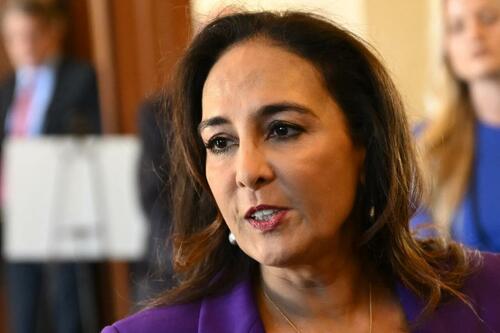 Harmeet Dhillon
Harmeet Dhillon

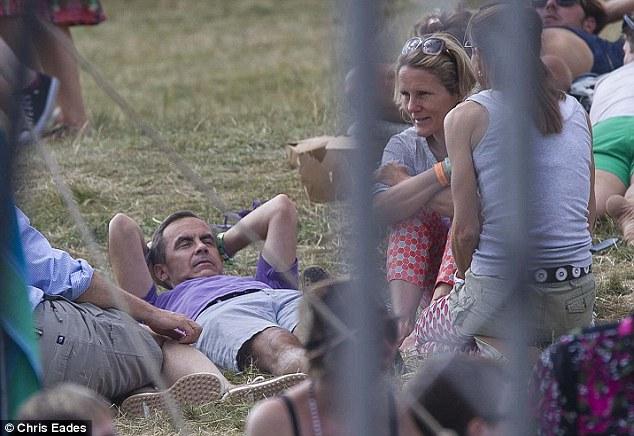
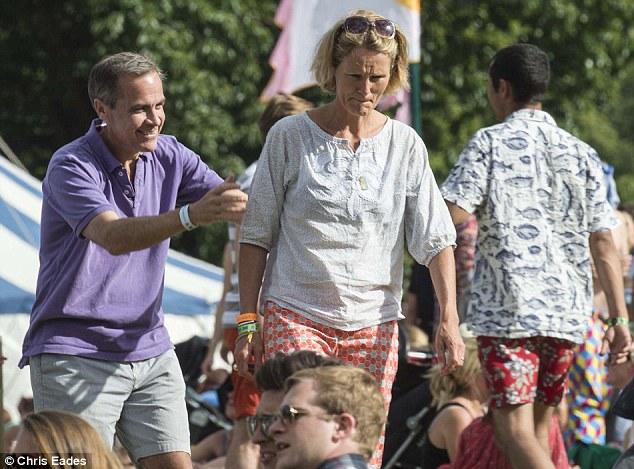




 Satisfaction guaranteed. Simply ask for a refund...
Satisfaction guaranteed. Simply ask for a refund...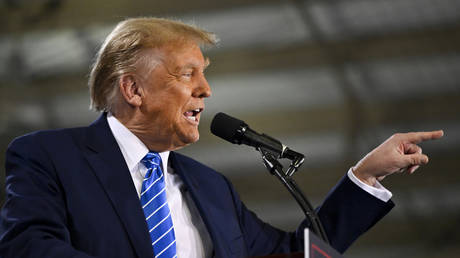

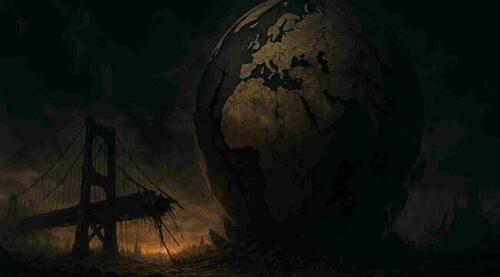
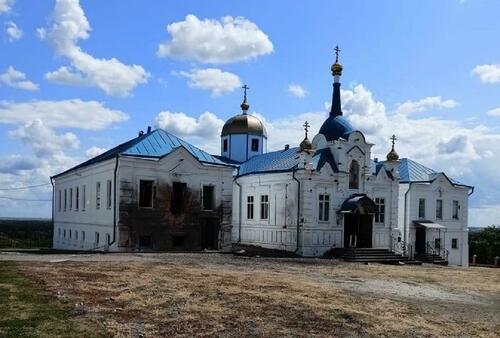 The damaged St. Nicholas Monastery in Gornal. Source: the Russian Orthodox Church Department for External Church Relations
The damaged St. Nicholas Monastery in Gornal. Source: the Russian Orthodox Church Department for External Church Relations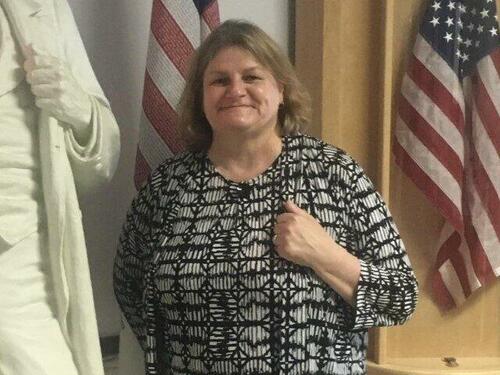
 Click pic... add to cart (one for each car & your go-bag storage)... be more prepared. Satisfaction guaranteed or your money back.
Click pic... add to cart (one for each car & your go-bag storage)... be more prepared. Satisfaction guaranteed or your money back.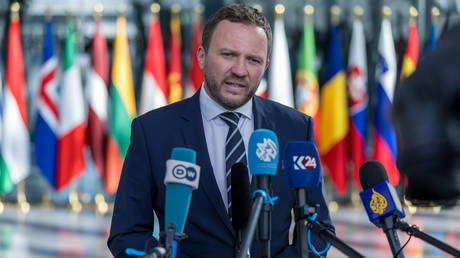


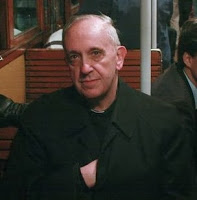
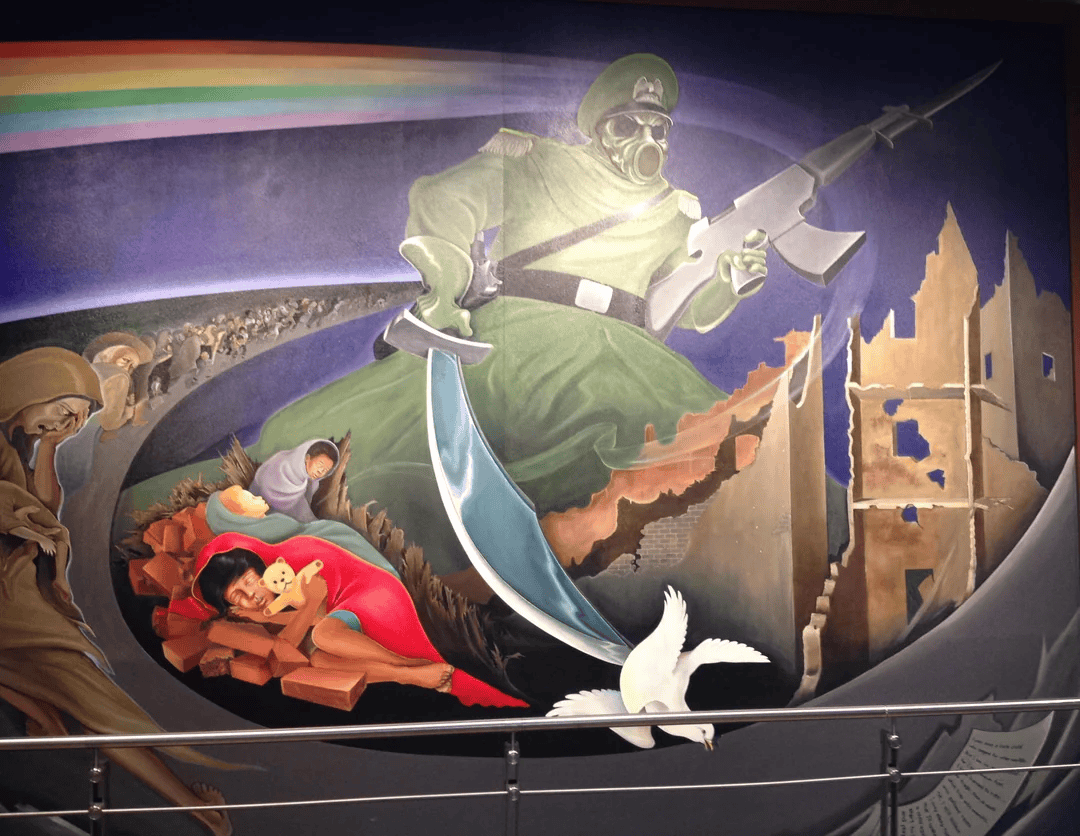
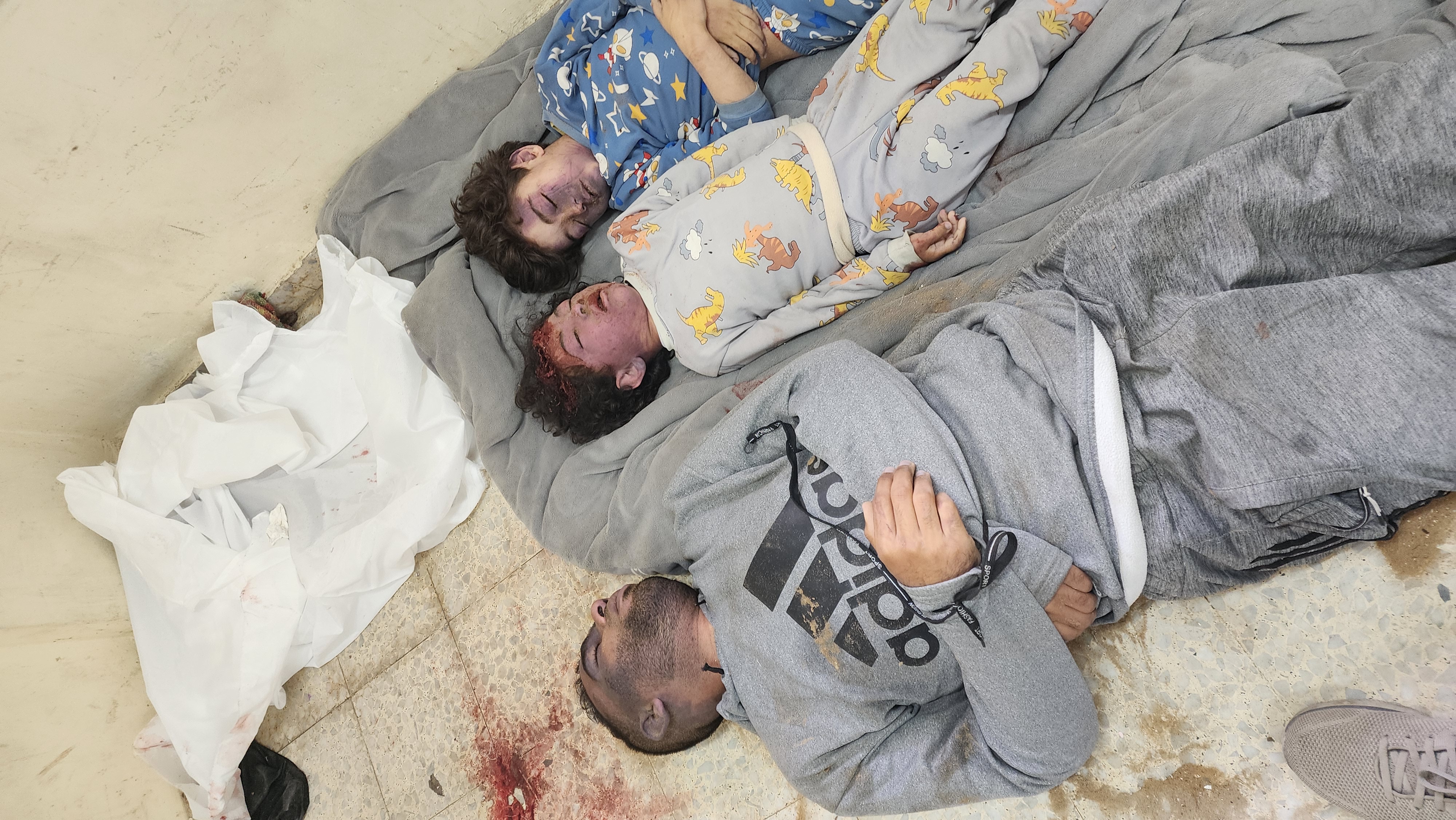
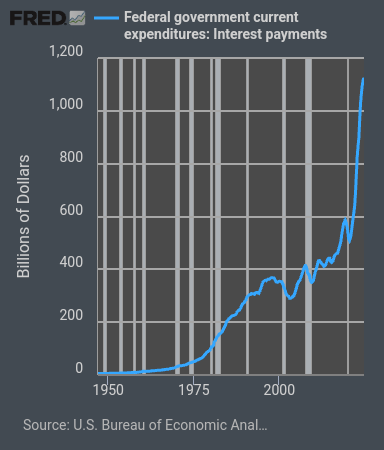 Thomas Stone- The end of the road; the deficits can't continue
Thomas Stone- The end of the road; the deficits can't continue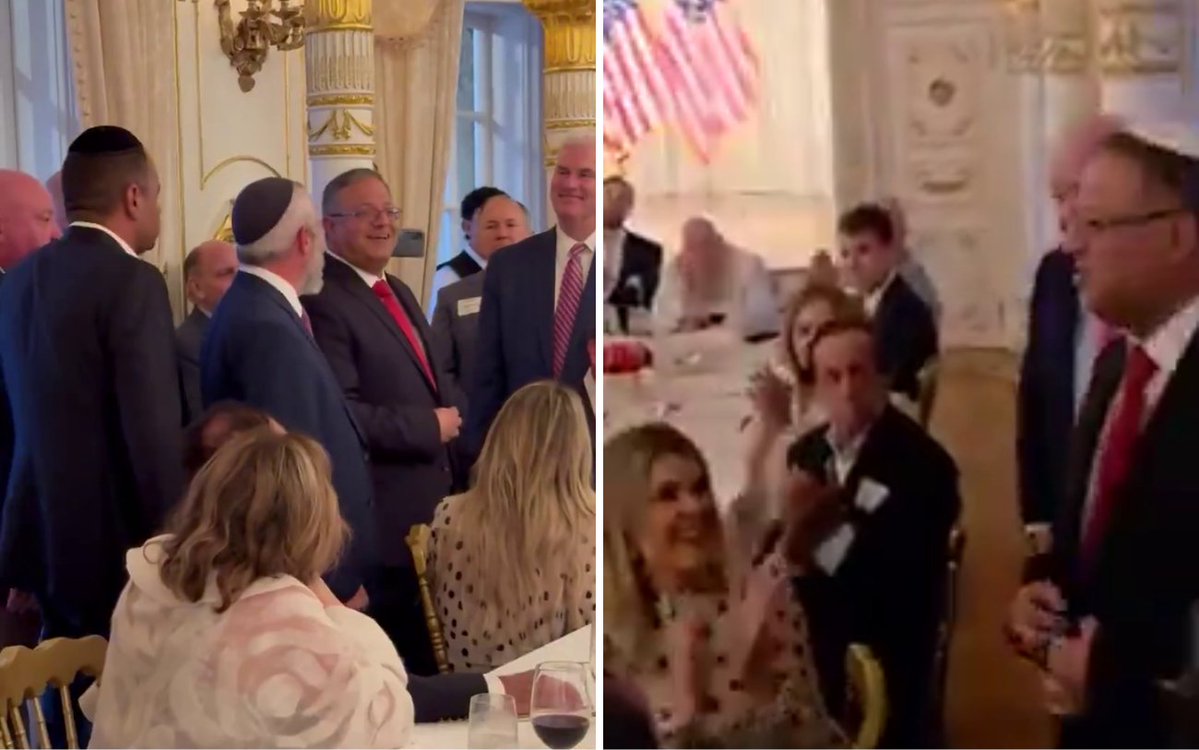
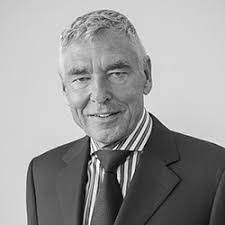
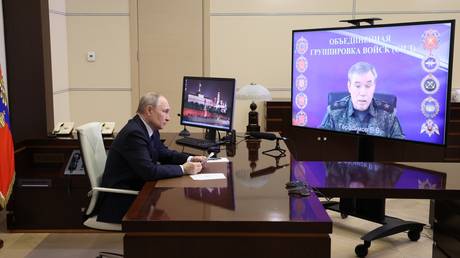
 Secretary of Defense Pete Hegseth participates in a morning physical training session with troops stationed in Warsaw, Poland, on Feb. 14, 2025. DoD photo by U.S. Navy Petty Officer 1st Class Alexander C. Kubitza
Secretary of Defense Pete Hegseth participates in a morning physical training session with troops stationed in Warsaw, Poland, on Feb. 14, 2025. DoD photo by U.S. Navy Petty Officer 1st Class Alexander C. Kubitza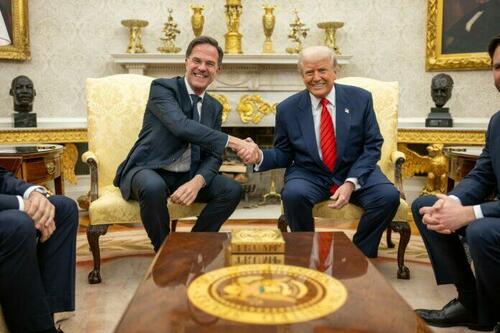


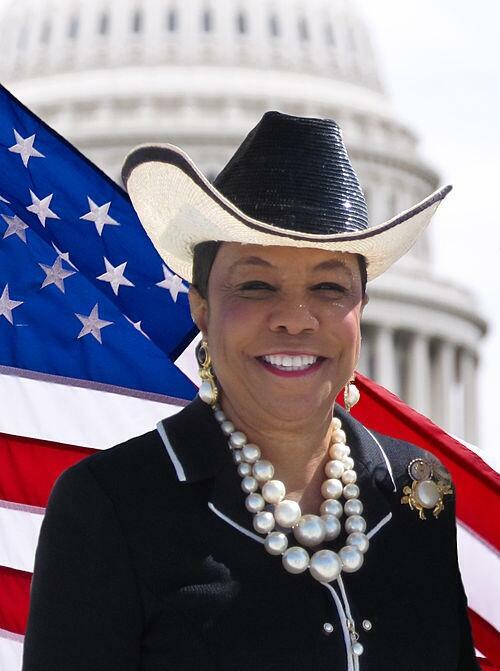

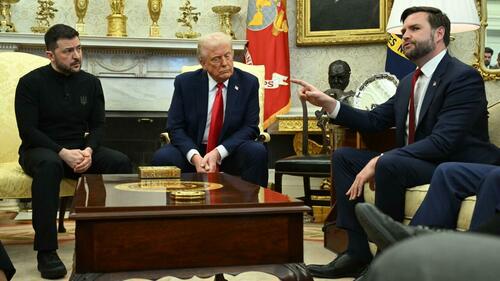


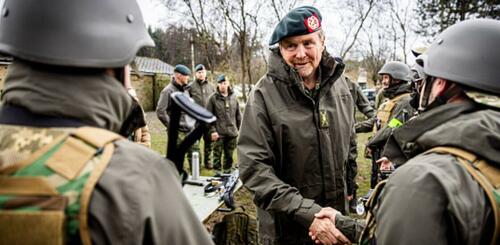
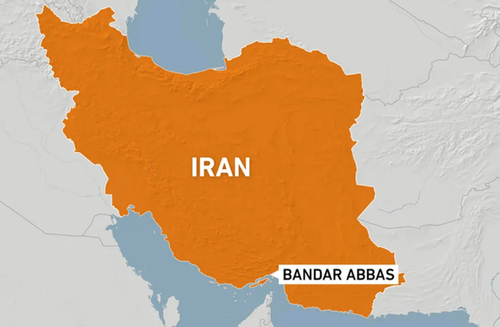
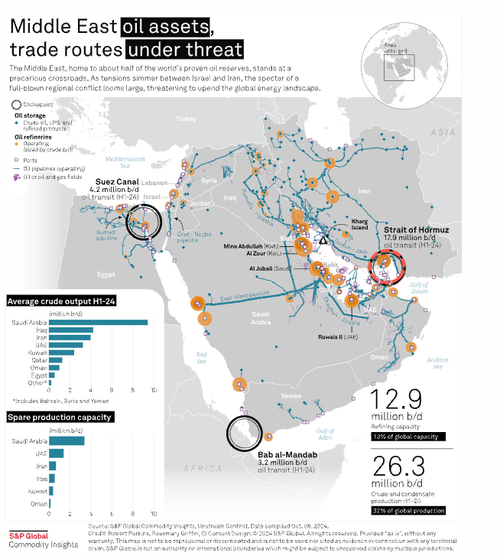
 Caroline Perkins, ChurchPOP
Caroline Perkins, ChurchPOP Caroline Perkins, ChurchPOP
Caroline Perkins, ChurchPOP Caroline Perkins, ChurchPOP
Caroline Perkins, ChurchPOP Caroline Perkins, ChurchPOP
Caroline Perkins, ChurchPOP Caroline Perkins, ChurchPOP
Caroline Perkins, ChurchPOP Caroline Perkins, ChurchPOP
Caroline Perkins, ChurchPOP Caroline Perkins, ChurchPOP
Caroline Perkins, ChurchPOP Caroline Perkins, ChurchPOP
Caroline Perkins, ChurchPOP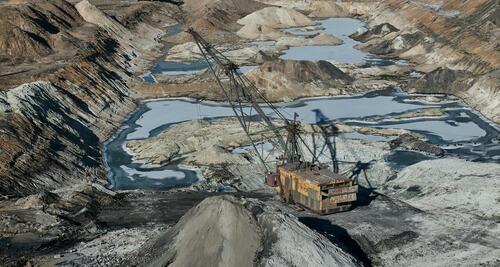 Getty Images
Getty Images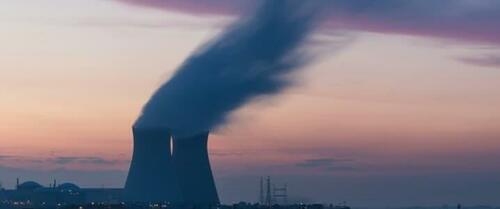

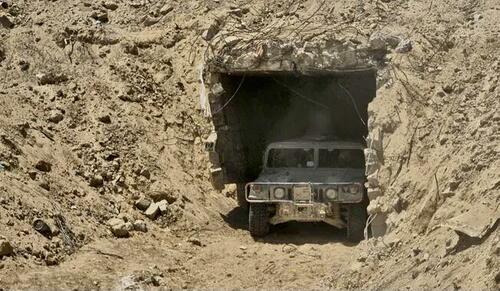 Last August, the Israeli Defense Forces distributed this photo and claimed it depicted a Hamas smuggling tunnel along Gaza's Egyptian border (IDF Spokesperson's Unit)
Last August, the Israeli Defense Forces distributed this photo and claimed it depicted a Hamas smuggling tunnel along Gaza's Egyptian border (IDF Spokesperson's Unit)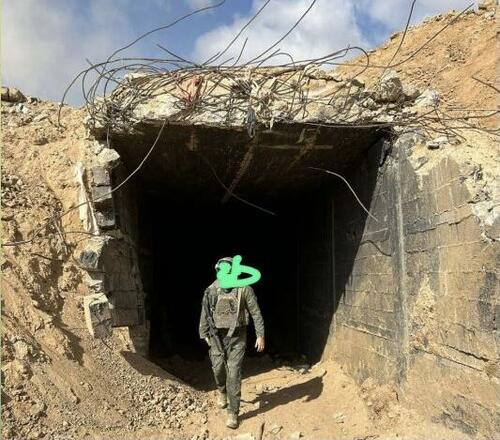 The supposed smuggling tunnel viewed from a different angle (Telegram via
The supposed smuggling tunnel viewed from a different angle (Telegram via 